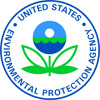EPA Fines Ajinomoto Health & Nutrition North America Inc. for Alleged Violations of Multiple Environmental Laws in Eddyville, Iowa

LENEXA, KAN. (DEC. 4, 2024) – Ajinomoto Health & Nutrition North America Inc. will pay $458,265 in civil penalties and install protections to contain releases of hazardous chemicals to resolve alleged violations of the federal Clean Air Act and Emergency Planning and Community Right-to-Know-Act (EPCRA) at its facilities in Eddyville, Iowa.
According to the U.S. Environmental Protection Agency (EPA), the facilities were inspected by the Agency after hazardous chemical releases prompted evacuations and community shelter-in-place orders. A release of hydrochloric acid occurred in 2021, followed by a 2022 chlorine gas release that resulted in employee injuries. Chlorine gas is a hazardous chemical that has a pungent, irritating odor and can be fatal when inhaled or lead to chronic lung conditions as a result of exposure.
“Ajinomoto’s operations presented a significant risk to its workers and the surrounding community,” said EPA Region 7 Enforcement and Compliance Division Director David Cozad. “This settlement, including the installation of an anhydrous ammonia containment system, will reduce the risk to workers and residents.”
Ajinomoto owns and operates two amino acid manufacturing facilities, one specializing in food and beverage industries and the other in animal nutrition. The facilities utilize a number of chemicals in their processes, including anhydrous ammonia, hydrochloric acid, and phosphoric acid. EPA identifies these chemicals as “extremely hazardous substances” because they are known to cause serious adverse effects to the environment and/or human health, including injury and death.
As outlined in the settlement, EPA alleges that Ajinomoto violated multiple legal requirements, including:
- Failure to identify hazards that may result from releases of hazardous substances.
- Failure to design and maintain safe facilities by failing to take steps necessary to prevent hazardous substance releases.
- Failure to adequately complete hazardous analyses to detect potential releases of hazardous substances and address hazards.
- Failure to comply with mechanical integrity requirements to prevent releases.
- Failure to adequately coordinate with local emergency planning and response organizations to make them aware of the chemicals used at the facilities and the risks presented.
- Failure to report the use of hazardous chemicals at the facility to local response authorities.
In addition to paying the civil penalty, Ajinomoto also agreed to install an ammonia water deluge system at one of its facilities at a cost of about $227,589. EPA says the project will contain and reduce the potential for anhydrous ammonia releases to the environment in the surrounding area. Further, Ajinomoto conducted a compliance audit at its facilities to evaluate and address any outstanding noncompliance with federal law.
Facilities that use hazardous, toxic, and/or flammable substances are required to comply with the Clean Air Act. The law’s “General Duty Clause” makes facility owners and operators responsible for managing chemicals safely. The law’s Risk Management Plan Rule requires facilities that use regulated toxic and/or flammable substances to develop a Risk Management Plan.
These plans identify the potential effects of a chemical accident; identify steps a facility is taking to prevent an accident; and spell out emergency response procedures should an accident occur. The plans also provide valuable information to local fire, police, and emergency response personnel to prepare for and respond to chemical emergencies in their community.
EPCRA has reporting requirements for facilities that manage hazardous chemicals that help communities plan for chemical emergencies and inform the public about potential risks.
# # #
Learn more about EPA Region 7
View all Region 7 news releases
Visit the Region 7 Media page
Connect with EPA Region 7 on Facebook and Instagram
Follow us on X: @EPARegion7
